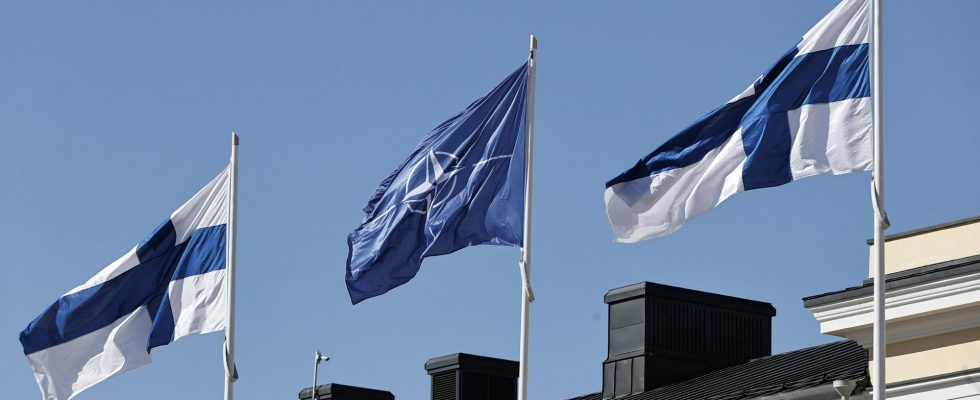FAQ
Status: 4/4/2023 5:59 p.m
Finland in NATO? At the beginning of 2022, that was an absurd scenario. But Russia’s war against Ukraine changed everything. What is the significance of joining? How will Moscow react? Answers to some questions.
What is the significance of Finland’s accession to NATO?
For the other alliance states, Finland’s accession initially means an extended obligation to provide assistance. Should Finland, which borders Russia, be attacked by its neighbor, it would be seen as an attack on all NATO countries – and any Allies would be called upon to lend their support.
Finland’s membership will extend the direct border between NATO and Russia by around 1,340 kilometers, more than doubling it. At the same time, the alliance founded in 1949 will become larger and more powerful as a result of Finland’s accession.
According to NATO Secretary General Jens Stoltenberg, the EU’s northernmost country has a well-equipped and trained armed forces and is currently investing in more than 60 state-of-the-art F-35 fighter jets. Because of Finland’s geographic location, the Baltic NATO states of Estonia, Lithuania and Latvia, for example, could be much better defended in the event of a Russian attack.
What does that mean in numbers?
According to figures from the International Institute for Strategic Studies (IISS), Finland is already one of the countries that invest two percent of their gross domestic product in defense every year. Germany and a number of other alliance partners are currently not achieving this important NATO benchmark. The size of the Finnish armed forces is given by the IISS as 19,000 men and women. There are also around 238,000 reservists. Finland has around 100 Leopard 2A6 main battle tanks and hundreds of artillery pieces to protect its borders.
What does NATO’s northern expansion mean for Russia?
From Stoltenberg’s point of view, the admission of Finland is a clear sign of the failure of the policy of Russian President Vladimir Putin. Putin went into the war against Ukraine with the declared goal of having less of a NATO presence in Europe and preventing an expansion of the alliance. With Finland’s accession, NATO’s border with Russia will be more than twice as long in the future. Putin is getting exactly the opposite of what he wanted.
At the same time, NATO emphasizes that there is no reason for Russia to feel threatened by northern expansion. The alliance also contradicts representations that the alliance really wants to encircle Russia. According to NATO information, only 1,215 kilometers of the more than 20,000 kilometers long Russian land border are currently bordering NATO countries. Even if another 1340 kilometers are added, the common border is comparatively small.
How does Moscow view Finland’s entry into NATO?
Kremlin chief Putin has repeatedly made it clear that he has a major problem with NATO expansion towards Russia. Moscow has reacted accordingly to the accession process in recent months. The Russian Foreign Ministry criticized that the neighbor’s accession would cause severe damage to Russian-Finnish relations. “Russia will be forced to respond appropriately – in military-technical and other respects – to take account of the threats to its national security,” the ministry said in a statement in May last year.
Could Russia respond violently to accession?
NATO considers such a move extremely unlikely. On the one hand, the Russian armed forces are tied down by the war against Ukraine and in some cases are severely weakened. On the other hand, Putin would then also mess with the 30 other NATO countries.
However, NATO considers it quite conceivable that Russia might, for example, launch cyber attacks against targets in Finland or try to alarm the Finnish population with increased air force activities. In addition, Dmitry Medvedev, Deputy Head of the National Security Council and ex-President, has threatened to station nuclear weapons in the Russian Baltic Sea region.
What does accession mean for Finland?
For many decades, Finland has managed a difficult balancing act between East and West: In view of its extremely long border with Russia, the country tried to be on good terms with the giant empire in the east. At the same time, however, it built closer and closer ties to the West. In 1995 Finland joined the EU. Later, it was the only Nordic country to introduce the euro. The Finns have worked together with NATO as a close partner – but without severing the relatively good contacts with Moscow.
Russia’s war of aggression against Ukraine put an abrupt end to this East-West balance. After many years of military non-alignment, Finland applied for NATO membership together with Sweden in May 2022. The Finns have now been included in record time. This step is almost as important as EU membership, political advisor Risto EJ Penttilä recently told Finnish radio. “EU membership meant that Finland is part of Europe and the West, but at the same time we were outside of NATO,” he said. “Now we are integrated in Europe, but through this NATO membership we also have a strong connection to the USA.”
What’s next for Sweden?
The Swedes actually wanted to join NATO at the same time as their Finnish neighbors – but nothing came of it. The reason for this is that Turkey still does not want to agree to Sweden joining NATO and Hungary has still not ratified it either. Ankara complains that, from Turkey’s point of view, its efforts against “terrorist organizations” are inadequate and wants to force concessions. Among other things, Budapest takes issue with Swedish statements on the rule of law in Hungary.
It is still unclear when the two countries will also open the door for the Swedes. Stoltenberg recently said he was absolutely confident that Sweden would also become a member. The country will not be left alone and can already count on NATO reacting to threats or attacks against the country.

